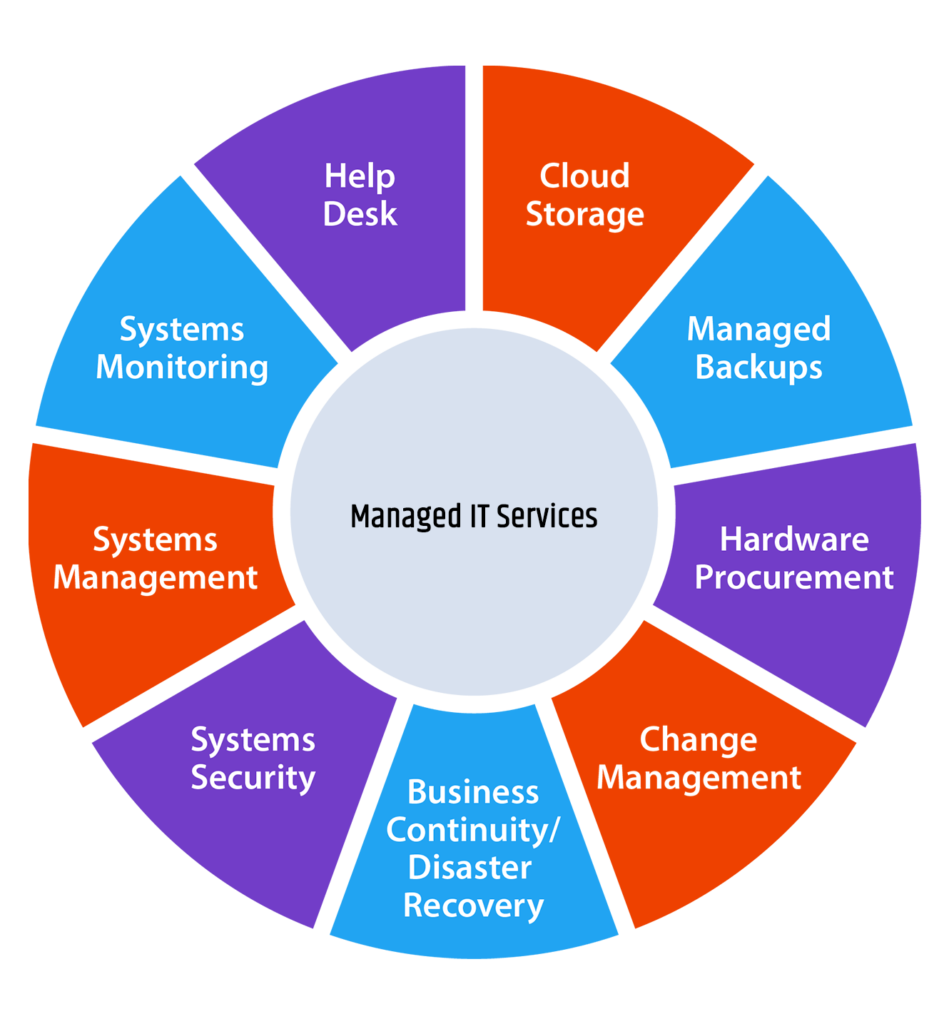Managed IT Services

Managed IT Services
Managed IT services offer businesses the opportunity to delegate their IT operations to specialized third-party organizations, known as Managed Service Providers (MSPs). These MSPs assume responsibility for either the entire IT infrastructure or specific components, as defined in a Service Level Agreement (SLA). Typically, clients procure the necessary IT equipment, while MSPs provide round-the-clock monitoring, issue resolution, reporting, and more.
Under the SLA, MSPs charge a fixed fee for their services over a specified period. The SLA outlines the exact services to be provided, their scope, and metrics for measuring their effectiveness.
The advent of cloud computing has enabled managed IT services to expand beyond geographic limitations. Through the utilization of Software as a Service (SaaS), Infrastructure as a Service (IaaS), and Platform as a Service (PaaS), these services can scale rapidly and more efficiently than traditional in-house IT operations or break/fix providers.

The Importance of Managed IT Services:

Alignment with Organizational Goals: Managed IT services ensure that IT outcomes are in line with the organization’s objectives. Service providers are motivated to minimize problems, as their performance is measured based on the efficiency of the IT infrastructure.
Peace of Mind: As a business owner, you can focus on running your business while leaving the IT management to experts. Managed service providers take care of all IT-related tasks, providing you with peace of mind.
Proactive Support: Managed services offer proactive support, aiming to identify and address issues before they occur. This proactive approach helps maintain system uptime and minimize disruptions.
Strategic IT Planning: Managed services assist in long-term IT planning by providing guidance on future IT requirements. This proactive approach ensures that IT infrastructure and software are regularly updated and upgraded, reducing the risk of downtime, viruses, and crashes.
Complete Outsourced IT: Managed services offer access to a complete IT department, including day-to-day support, an IT manager, and a virtual Chief Information Officer (CIO). This allows businesses to strategically align IT with organizational objectives.
Four Keys to Successful Implementation of Managed IT Services:

Calculate the Total Cost of IT: Perform a comprehensive analysis of your current IT costs, including support expenses and the impact of inefficiencies and downtime on productivity.
Identify Potential Providers and Request an Audit: Shortlist managed service providers based on their track record, industry expertise, and compatibility with your organization. Request an IT audit to evaluate your current systems and infrastructure.
Select the Right Provider and Complete the Onboarding Process: Choose a provider that meets your specific requirements and goals. Consider factors such as improving IT efficiency, increasing productivity, and minimizing downtime. The onboarding process involves implementing security changes, severing ties with the incumbent IT company, and consolidating documentation and network diagrams.
Experience the Benefits: Through successful implementation, organizations can experience increased efficiency, improved productivity, and reduced downtime by leveraging the expertise and proactive services of managed IT service providers.
We have extensive experience assisting organizations in transitioning to managed IT services, enabling them to reap the benefits of streamlined operations, enhanced productivity, and minimized downtime.

